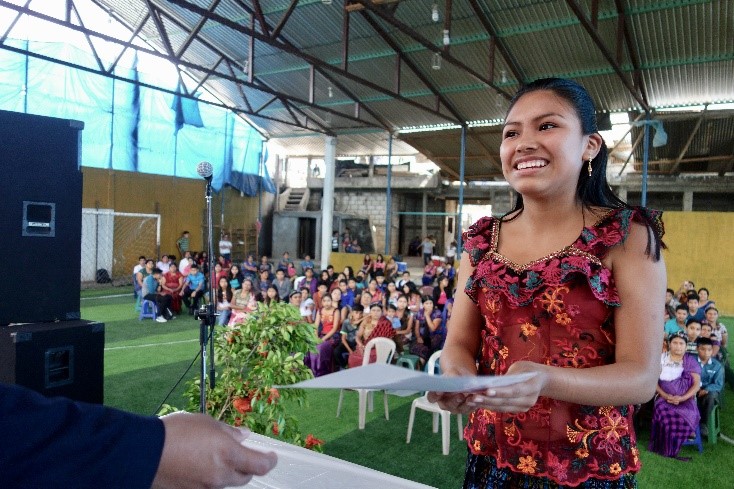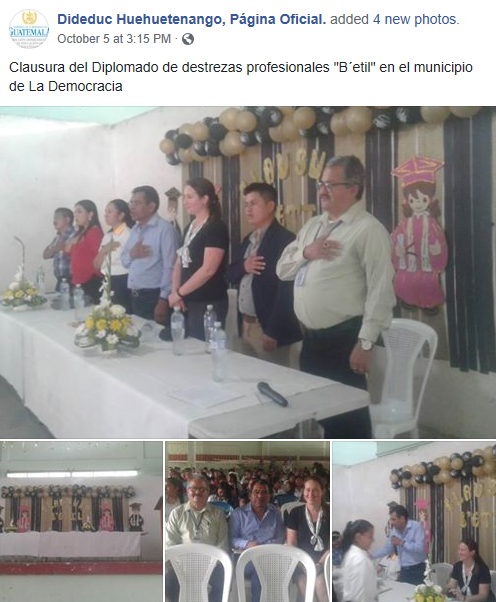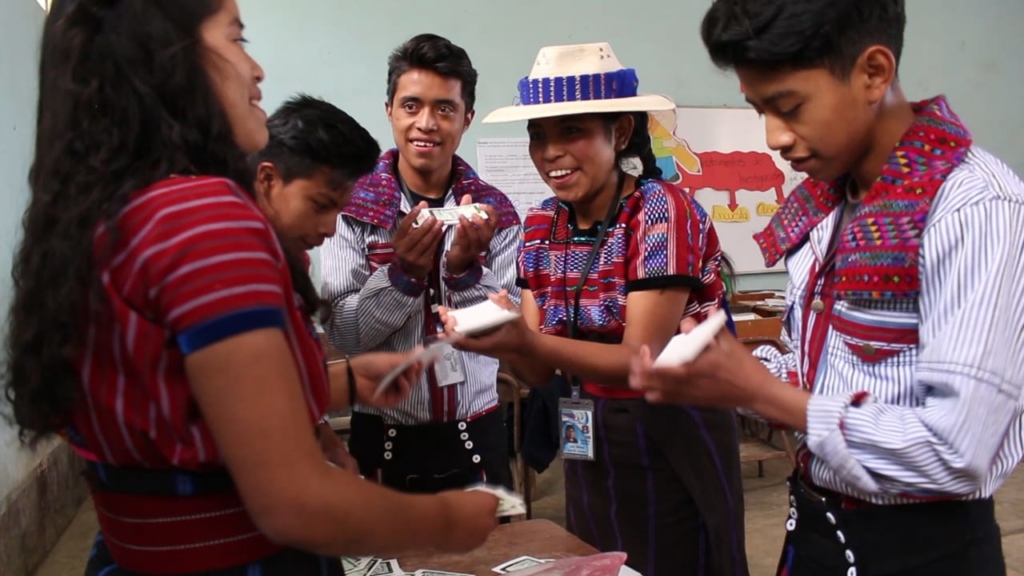How Important is Chinese Lending to Latin America?
Chinese lending to Latin America and the Caribbean hit an all-time high of $37 billion in 2010.
Este artículo está disponible en español

Education is a cornerstone for human and economic development. With every additional year of schooling, a person’s income increases by up to 10%, resulting in important improvements to quality of life.[1] Moreover, an educated population is a powerful tool to change the economy of a country, ensuring that it has the skills that are needed to compete globally.
Although Guatemala has done important work in achieving educational access at the primary and middle school level, when it comes to educational attainment and quality of education, there is still much to be done. Only one-fifth of students in middle school and high school reach national standards in Math and Reading.[2] Moreover, around 6.6% of students in middle school drop out of school. Among the principal reasons for school dropout are the need to join the labor force and the decision to migrate.
¨In our society, we’re used to projects coming into our communities, but then don’t see education as a priority. Sometimes students already have in mind that they want to go to the United States after nine grade.” Izela de Leon, B’etil Diploma Teacher
Guatemala´s educational challenges and its high levels of emigration[3] are strongly related. Both education and migrating are conscious decisions that people make to try to improve their livelihood condition. However, education is most cases a much safer option for Guatemalan youth to take.
To help Guatemalan youth build pre-professional skills that translate into an added value for their future career, the Opportunities for My Community project is implementing, since 2017, an extracurricular program in municipalities of high emigration in Guatemala.
The extracurricular program is called the “B’etil Diploma for Professional Skills”. B’etil means ¨to move forward or advance¨ in Mam, a Mayan language that is spoken in Guatemala. The B’etil Diploma consists of three modules focused on math, communications and entrepreneurship skills, linked by two cross-cutting themes, Civic Engagement and Entering the Workforce. Its curriculum aligns with the needs and priorities of our partner schools and has been reviewed and approved by the Guatemalan Ministry of Education.
“The principal visits each classroom encouraging us to attend the Diploma program since it will help us in our professional careers.” Bryan Saquic, Student

The Opportunities for My Community project has partnered with over two dozen schools in order to implement this Diploma program in the municipalities of Totonicapán, Quetzaltenango and Huehuetenango. This has ensured schools´ involvement and support, a fundamental part of the program success. Schools provide classrooms to implement the Diploma and promote this program among students and their parents. For instance, at Instituto Nacional de Educación Básico de Telesecundaria Pacajá, in Quetzaltenango, the implementation of the Bétil Diploma is possible thanks to the principal´s coordination with community leaders to provide a physical space to teach the Diploma. This has allowed students to have an appropriate and safe space to attend the Diploma´s sessions, close to their regular classrooms. Moreover, the school is giving extra points to those students who participate in the Diploma, keeping students motivated to attend classes.
School principals have shown enthusiasm for the Diploma since it gives students the opportunity to reinforce basic math and communications knowledge, and to explore the business world at an early age. For instance, thanks to the diploma, for the first-time students have been able to learn how to create their own resume, have learned the first steps needed to open a business, and have developed soft skills such as public speaking. These types of activities are helpful to build self-confidence among students and to prepare them for real life situations in their professional future.

The B’etil Diploma has managed to create a sense of ownership among schools. Its teaching materials, which consist of three workbooks and various educational games, have been easy to share. The approach is relatively simple and does not require expensive materials or complicated dynamics. Moreover, its ¨hands on¨ approach has awakened the interest of teachers in the Diploma, who describe it as a different experience that students enjoy. Luis Tzaquiztal, a B’etil Diploma teacher at Instituto de Educación Básica por Cooperativa Cantón Chotacaj, described the Diploma as: ¨Very fun, dynamic and entertaining for each of my students. Students learn while playing. The books have a variety of activities that help students participate in different ways.”
Measuring the impacts of the B’etil Diploma has been a priority for the project. This helps to assess the extent to which teachers and students are meeting the goals of the curriculum. Regarding student’s academic outcomes, the results of a pre and post-test applied at the beginning and end of the Diploma has showed that on average students improved their knowledge in math, communication and entrepreneurship by 52% after completing the program. Moreover, the B’etil Diploma program was successful in addressing previous gaps, such as those between Ladino and Mayan students, and helping everyone advance.
Since 2017 over 5,500 students have participated in the B’etil Diploma, and many have received their final “Diploma” during a special ceremony. Graduation ceremonies were an important moment to recognize the commitment made by students, their parents, teachers, principals, and local authorities, who see in education an opportunity to build a better future for students, their communities and their country.
[1] UNESCO, Education Counts, 2011.Available at: https://unesdoc.unesco.org/images/0019/001902/190214e.pdf
[2] INE, República de Guatemala: Compendio de Educación 2015, Available at: https://www.ine.gob.gt/sistema/uploads/2017/01/16/13EpHY9jEEyYORgJJAUwB758EoJL36aV.pdf
[3] From 2009 to 2017, annual emigration from Guatemala increased by 4.2% (60,139 in 2017). See Manuel Orozco, Trends in Central American migration, Available at: https://www.thedialogue.org/wp-content/uploads/2018/08/CCAAug2018.pdf
Chinese lending to Latin America and the Caribbean hit an all-time high of $37 billion in 2010.
Venezuelan president Nicolas Maduro left China last month with a supposed show of support from the Chinese government.
Summary of PREAL’s recent international conference on teacher effectiveness, held in Guatemala City.
